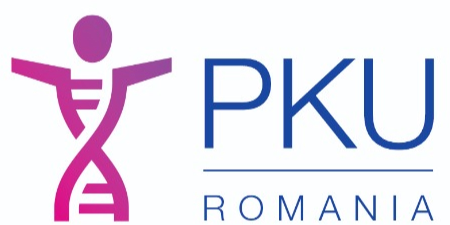Dietotherapy
Nutritional aspects of dietary management in PAH deficiency
Dietary therapy is the basis of PAH deficiency therapy. In people with PAH deficiency the doctor will recommend: - a diet restricted in phenylalanine and natural protein to which will be associated a complementary diet of synthetic protein (amino acid combination lacking Phe) (4,11,20) and hypoprotein medical foods. The reference dietary intake for PAH-deficient individuals is modified from that used for the general population in terms of Phe, Tyr and protein content.
Plasma phenylalanine level in a patient with hyperphenylalaninemia is influenced by dietary intake of Phe, patient age, growth rate, health status and residual PAH activity.
Energy and protein requirements should be assessed individually in patients with PKU; protein intake in PKU patients is 20% higher than the safe level shown in the WHO FAO 2007 tables.
Nutritional protein requirements are higher in PAH deficient individuals than in the general population because their synthetic protein supplements administered to these patients decrease their bioavailability and increase their catabolism. Energy intake varies from person to person and most evidence suggests that energy requirements are not increased in PAH deficiency.
In children with hyperphenylalaninaemia amino acid requirements are calculated individually by summing the content of specific medical products without Phe (phenylalanine-free protein substitute) with proteins of natural origin. If only the protein- and Phe-restricted diet is used, an inadequate protein intake is reached if the patient does not also consume a Phe-free but amino acid-based medical food. This medical food will supplement protein, calories and other unavailable nutrients.
The protein substitute without phenylalanine (or at least very low in Phe) should be distributed as evenly as possible over 24 hours. The daily amount of phenylalanine should be divided into 5 meals for the infant. Studies suggest that distributing the protein substitute as evenly as possible throughout the day stabilises Phe concentrations throughout the day.
Patients with PAH deficiency can consume low-protein medical foods, which are derived from natural foods modified to reduce protein and Phe content. Medical foods such as pasta, rice and pastries prepared from starches derived from wheat and other cereals are similar to normal foods and thus help to increase dietary variety, normalise the appearance of special dishes and increase dietary compliance.
To treat a patient with phenylketonuria the doctor must first establish phenylalanine tolerance. The doctor establishes Phe tolerance by relating blood phenylalanine to dietary Phe intake. Phenylalanine tolerance is the maximum dietary intake of phenylalanine that allows stabilisation and maintenance of plasma phenylalanine concentration within the safe range. The amount of phenylalanine tolerated may differ from patient to patient depending on the type of genetic mutation of PAH.
Treatment of infants and children with phenylketonuria
Newborns detected with plasma phenylalanine values above 360 should be treated as soon as possible after birth. The age at which treatment starts influences the child's long-term development. Thus, it has been found that there is an inverse relationship between the age at which treatment is started in children with phenylketonuria and their IQ. It is recommended that treatment in phenylketonuria should ideally be initiated in the first 7-10 days of life, which is considered ideal.
With neonatal screening it is possible to initiate treatment as early as the first week of life, in which case phenylalaninemia values may reach normal limits (corresponding to the reference range) in the first 2 weeks of life. Treatment in children with phenylketonuria consists of a phenylalanine-restricted diet combined with a phenylalanine-free amino acid mix. The phenylalanine-restricted diet will result in a reduction in plasma phenylalanine and the amino acid admixture will provide the necessary amino acid intake for growth and development.
In the infant with PKU the diet is initiated by totally suppressing the dietary intake of Phe for a limited period of time and ensuring the nutritional needs by adding an amino acid mix enriched with tyrosine and other micronutrients (vitamins and minerals). During this period the energy intake will be 120kcal/kg body/day and the protein intake 3.5g/kg body/day.
The doctor should advise the mother to breastfeed.
Long-term treatment results have been shown to be better among breastfed infants than formula-fed infants. The superiority of breastfeeding lies in the fact that breast milk is low in Phe and is one of the best natural sources of the BH4 coenzyme PAH.
In the infant fed with mother's milk or infant formula, the daily amount of phenylalanine in the diet shall be divided into 5 meals, the order of food intake being:
- the breastfed infant will receive special PKU calculated formula and breast;
- artificially fed infants will receive the calculated infant formula according to tolerance and the special PKU formula
Infants with serum phenylalanine values between 120-360 µmol/L do not require dietary treatment but the doctor should monitor plasma phenylalanine in the first 2 years of life as in dieters.
Plasma phenylalanine monitoring assures the physician that serum Phe levels do not rise above the safe limit.
In the diversified infant, protein restriction is maintained, with natural proteins from both milk and vegetables and fruits, recommended for age, calculated according to Phe tolerance. Consequently dietary protein intake is calculated according to Phe tolerance and includes: natural foods, amino acid mix and specific hypoprotein foods. In the dietary schemes the amount of unmodified natural food is calculated by the phenylalanine-protein equivalence method or the Phe and protein composition tables of foods.
Protein and Phe restriction implies:
- exclusion of high protein foods (meat and meat preparations, fish, eggs, cheese, cocoa, soya, cereals, peanuts, nuts, bread, pasta, aspartame juices);
- limited consumption of foods with a moderate protein content (milk, yoghurt, cream, cream, rice, potatoes, carrots, cabbage, cauliflower, spinach, tomatoes, peppers, cucumbers, oranges, bananas, apples, avocados, pears, peaches);
- normal but not excessive consumption of foods low in protein and PHE (sugar, oil, margarine, jam, honey, natural syrup, corn or potato starch).
Duration of diet therapy in PKU patients
PKU treatment is necessary throughout life!
Dietary therapy in pregnancy and postpartum
In women with preconceptional PKU it is mandatory to maintain maternal Phe levels < 360 µmol/l.
A linear relationship has been shown between maternal Phe levels > 360 µmol/l during the gestational period and lower IQ of the developing fetus.
Drug treatment (Sapropterin dihydrochloride)
Administration of Sapropterin leads to increased tolerance to dietary Phe and/or relief of clinical symptoms in Sapropterin-responsive individuals in both children and adults.
Sapropterin is a synthetic form of the natural cofactor, tetrahydrobiopterin. Although not deficient in endogenous tetrahydrobiopterin, some PAH-deficient patients who have some residual enzyme activity respond to Sapropterin administration with an increase in Phe metabolism to Tyr. Approximately 25-30% of PAH deficient patients respond to Sapropterin testing.
Read the full guide: http://www.ms.ro/wp-content/uploads/2016/10/FinalOrdinGhid-PKU-1.pdf


